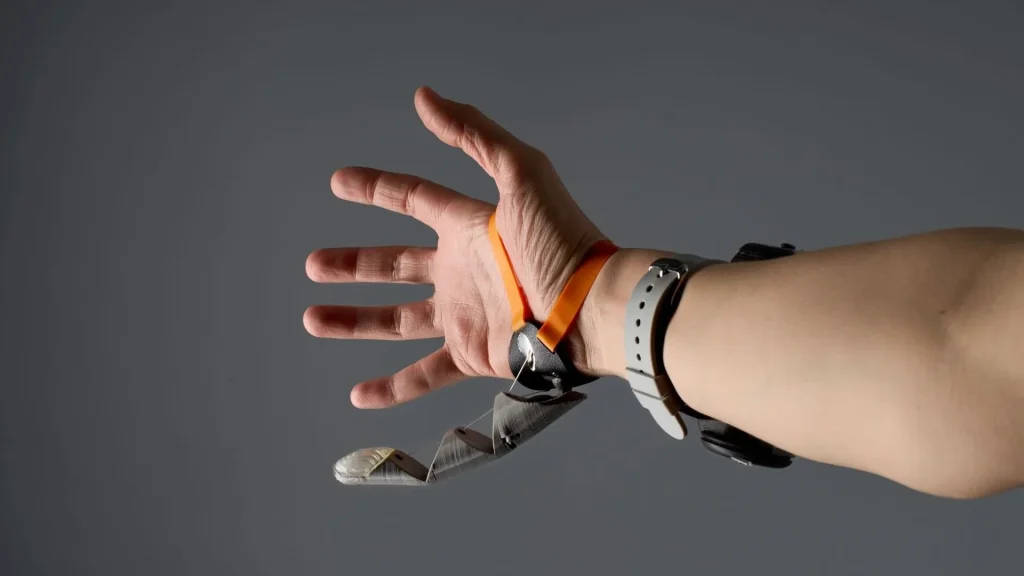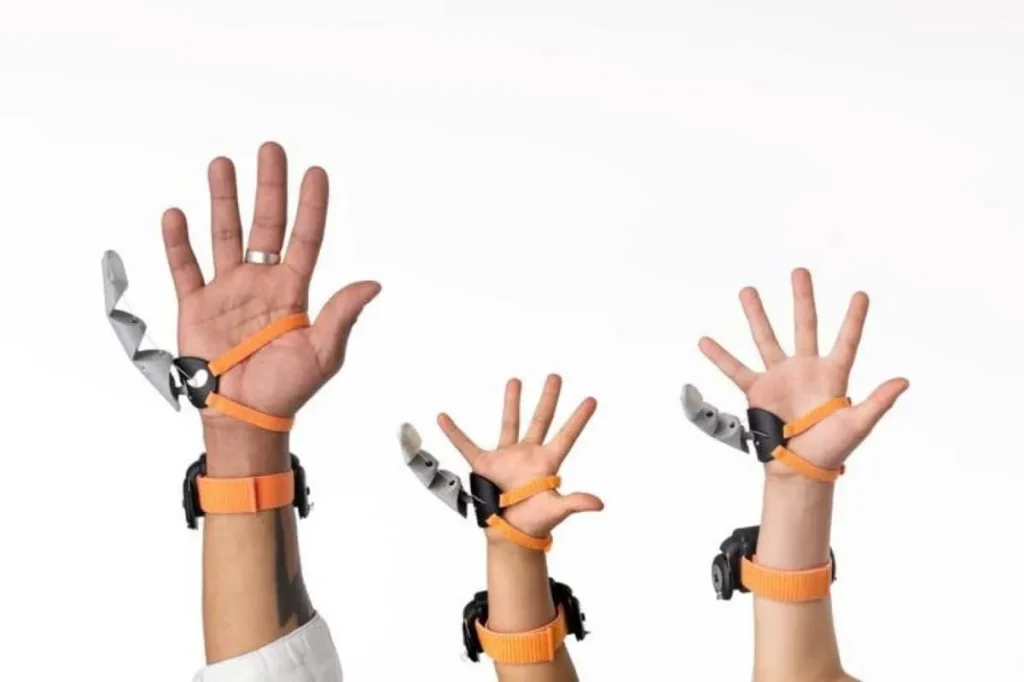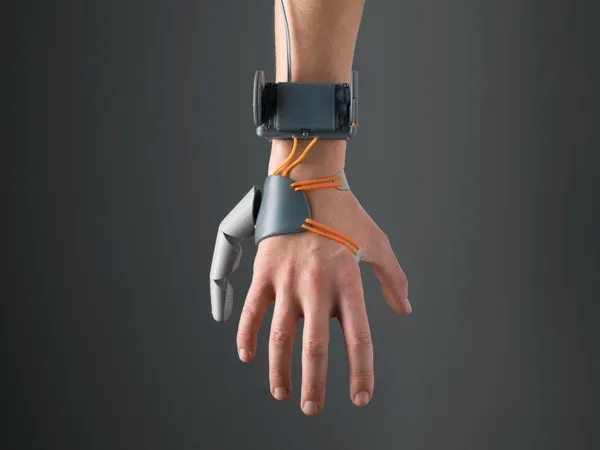The University of Cambridge has introduced the ‘Third Thumb,’ a wearable device designed to augment human motor capabilities. Developed by researcher Dani Clode and co-author Lucy Dowdall from the MRC Cognition and Brain Sciences Unit, this revolutionary device promises to redefine interactions between humans and technology.

The ‘Third Thumb’ is a controllable, prosthetic thumb worn opposite the biological thumb on the palm. It is operated via pressure sensors placed under the user’s big toes or feet. By applying pressure with the right toe, the thumb moves across the hand, while pressure from the left toe directs it upwards towards the fingers. The degree of movement corresponds to the amount of pressure exerted, and releasing pressure returns the thumb to its original position.
This innovation represents a significant step in the field of motor augmentation, which explores the use of motorized wearable devices like exoskeletons and robotic body parts to extend human capabilities beyond biological limits. While initially developed to enhance productivity in healthy individuals, such technology also holds promise for improving the quality of life for people with disabilities, providing new avenues for interaction with their environment.

Dani Clode emphasized the transformative potential of augmentation technology, stating, “Augmentation is about designing a new relationship with technology. Creating something that extends beyond being merely a tool to becoming an extension of the body itself.”
Lucy Dowdall highlighted the importance of seamless integration with users’ motor and cognitive abilities for the success of such innovations in human-machine interactions. This integration ensures that devices like the ‘Third Thumb’ can effectively enhance user capabilities while maintaining natural movement and cognitive ease.

As the ‘Third Thumb’ demonstrates, advancements in motor augmentation have the power to reshape daily life and redefine human capabilities. Whether for enhancing productivity, assisting individuals with disabilities, or exploring new realms of human-machine integration, these technologies represent a frontier of innovation with vast potential.
